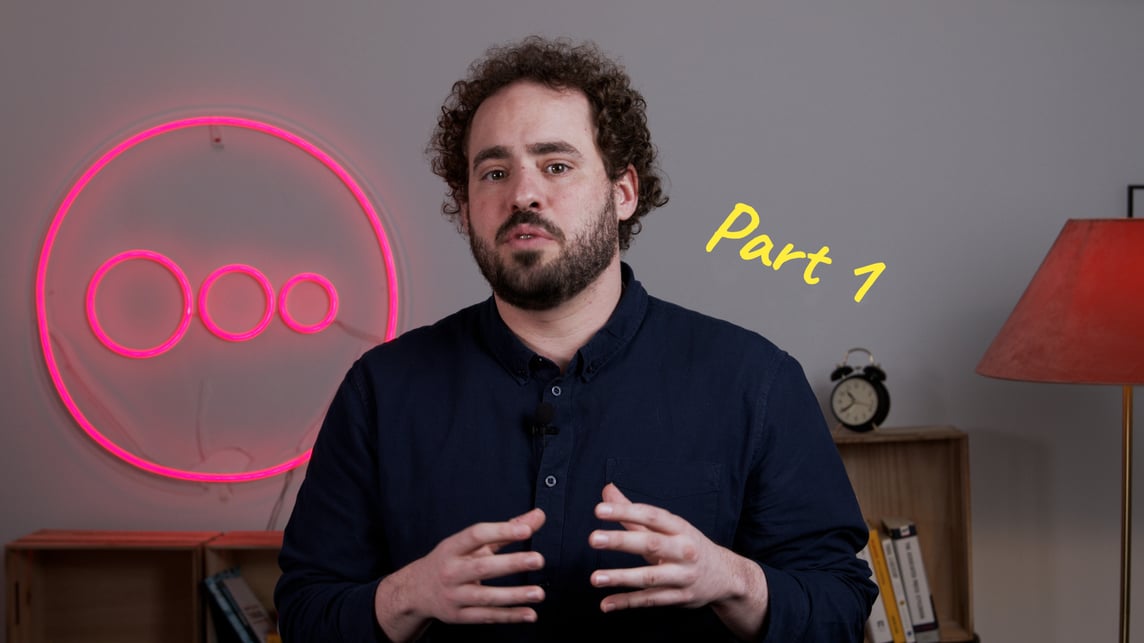-
 Written by Sean Dougherty
Written by Sean DoughertySenior Brand Creative at Funnel, Sean has more than 15 years of experience working in branding and advertising (both agency and client side). He's also a professional voice actor.

Media automation and data loss are the two strongest forces shaping performance marketing today. Both of these trends are changing the core of the industry and, as a result, are changing the entire landscape of digital marketing.
So, what are media automation and data loss? And how do you keep up with these seismic shifts to make sure your campaigns stay as effective as ever?
Let’s take these two concepts head on, one at a time — starting with automation.
Automation is now
While the machines aren’t coming for your job (yet), they are already taking over many of the fine tuning and more laborious processes performance marketers used to be responsible for.
A perfect example of this is Google Ads. For years, they have slowly made their ads platform more and more automated. At first, the system took over the responsibility for setting bidding strategies. Then came smart display and shopping campaigns, discovery campaigns, and optimized targeting.
This has all culminated in the new Performance Max campaigns product that launched in 2021.
An example of campaign automation
As we’ve covered here, Performance Max is a sort of “black box” that acts almost as your personal performance marketing assistant. You simply provide the system with some imagery, a landing page, the conversion objective, and permission to bill your credit card. Then the system goes to work building, testing, and optimizing the campaign to meet your conversion goal as best as possible.
To be sure, the system isn’t without its faults, and it may never be perfect. But it is an impressive tool that can augment other initiatives you’re currently running, and it relieves you of some more grind-like tasks so you can focus on more creative, higher-value work.
Advantage+ follows closely behind
Not to be outdone, Facebook’s parent company, Meta, also launched its own set of automated campaigns under their Advantage+ umbrella. Right now, marketers can choose from two campaign types: shopping or apps. The platform is then optimized to meet the needs of those types of campaigns.
Just like Performance Max, Advantage+ asks you to provide a conversion goal, a target geography, and lots of creatives. Then, you get out of the way.
Digital marketers may feel that this approach, handing over so much control to an unknown pile of code, is incredibly risky. After all, no one outside of the specific Meta developer (and maybe even those developers, too) knows exactly how the system works. The results, though, can be quite impressive.
The entire industry is becoming automated
If you’re experiencing existential dread about algorithms taking away your job, just stop and take a breath. It’s true that this style of automated campaign is being adopted by the entire digital advertising industry, but think on the bright side.
Remember how we referred to Performance Max as a sort of personal assistant? It’s because you can outsource loads of lower-grade functions to the machine. Think about how much time you can save by relieving yourself of constant campaign monitoring, fine tuning bids, etc.
Ciao, data
It was only a couple years ago. Data flowed forth from all corners of the internet. Ad platforms dropping cookies and tracking pixels across websites and browsers. Tracking, re-tracking, and more tracking. Ahhh… the golden years of data tracking.
Well, those days are long gone. We advertisers only have ourselves to blame, in a sense, too.
We overwhelmed internet users with so much advertising that we almost broke the internet. According to some estimates, about 43% of internet users are employing ad blockers.
Privacy please
Additionally, privacy has increasingly become a huge deal. Audiences have become wise to how much of their own data is being created and scooped up, then used by advertisers. Governments around the world have been passing strict user privacy laws to guard against the free flow of buying and selling user data without consent.
That has caused advertising platforms and website owners to adjust their strategies and business practices. Third-party cookies are going the way of the Dodo, due in large part to these new privacy laws. Now, digital marketers need to implement server-side tagging and other strategies to compensate.
Data loss by design?
In his book Unlevel The Playing Field, Frederick Vallaeys explores the idea that the restriction or perceived loss of data may actually be intentional (and a good thing) on behalf of the platforms.
The thinking goes something like this: as these platforms can provide more data (and more ability to control and analyze that data), they become increasingly complex. This complexity turns them into a sort of digital behemoth that collapses under its own weight. Nobody would have the time to work with this massive volume of data.
Instead, these processes must be handed off to machines who can quickly learn best practices and implement these more mundane processes at a higher speed and volume than humans ever could.
At the same time, these advertising platforms actually become more user friendly for performance marketers. We just need to have the courage to let go.
Between a rock and a hard place? Hardly.
On one hand, the automation of advertising platforms takes away many of the controls and levers that performance marketers have grown accustomed to over the years. On the other hand, digital marketers have less and less data to work from (compared to only a few years ago).
This combination of factors may seem like the digital marketing sky is falling, but in reality, they are just two sides of the same coin.
The volume of digital data has exploded over the past decade. Advertisers pounced on this resource, only for users and governments to later discover how valuable it (and privacy) can be. Advertising platforms, meanwhile, needed to overhaul their systems to account for the massive scale of data and to deploy algorithms that could quickly simulate audience behaviors in a post-cookie world.
Also read: What is performance marketing
The outcome for performance marketers is that, yes, we have less absolute control over our campaigns. But that’s probably a good thing in the long term. Our value was never really our ability to optimize our bidding strategies or tweak the micro audience until we were only targeting five people in Nebraska.
Our highest value is setting the campaign strategies, interpreting the results, and ensuring our performance marketing campaign supports the broader business objectives. So let’s take a deep breath, and let go of those old school control levers together.
Learn more: Future of performance marketing part 2 and part 3.
-
 Written by Sean Dougherty
Written by Sean DoughertySenior Brand Creative at Funnel, Sean has more than 15 years of experience working in branding and advertising (both agency and client side). He's also a professional voice actor.
